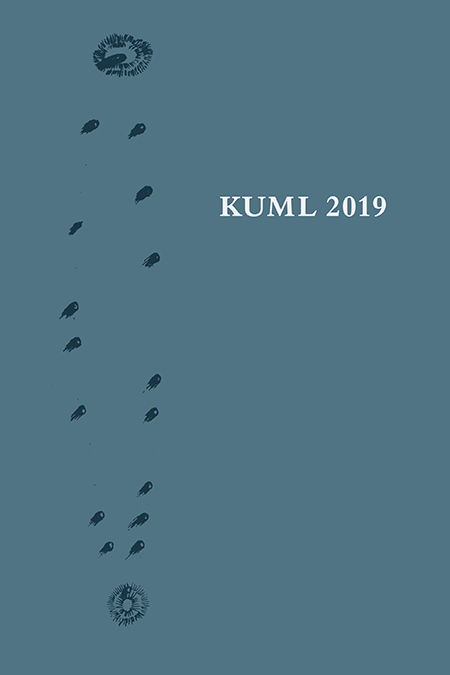Bronzealderens hjortetaksøkser – datering og deponeringsforhold
DOI:
https://doi.org/10.7146/kuml.v68i68.126028Nøgleord:
Bronzealder, Hjortetaksøkser, DeponeringsforholdResumé
Breonze Age antler axes – dating and depositional context
Antler axes are typically associated with the Mesolithic, but this article presents a group of antler axes from the Danish Bronze Age, when this artefact type surprisingly turns up again after an absence from the tool inventory of more than 2000 years (fig. 1).
These artefacts may be found in pits in a settlement context, but the typical finds contexts for the 155 recorded Bronze Age antler axes are rivers/watercourses, lakes and wetland areas, where the axes have been deposited individually, in line with the Bronze Age’s other major group of singly-deposited objects (figs. 2-3). This close relationship with water is linked to the European river finds, as antler axes are not solely a Danish phenomenon but are found across large parts of Europe during the Bronze Age, with the axes typically being deposited singly in running water. In both a Danish and a European context, the axes disappear again in the Iron Age.
This article gives an account of the Danish antler axes in relation to their distribution, finds circumstances and typological characteristics, together with a couple of metal analyses and several new 14C dates for antler axes. The antler axes from the Bronze Age vary in appearance; they may or may not be polished and may or may not be ornamented. They do though have certain features in common, for example they are characterised by a down-turned butt. The shaft-hole can either be round or rectangular and is located a long way back on the axe. They were typically hafted as axes rather than adzes, and their ornamentation frequently consists of point-circle motifs, where pitch has been inlaid to give contrast (figs. 4-8). In a very few cases, metal may form part of the ornamentation. Two results are presented here of micro-XRF analyses of, respectively, inlays of tin and bronze (figs. 9-14).
A significant part of the project focussed on dating of the Bronze Age antler axes. Only a couple of dates had been published previously, both of which fell in the Late Bronze Age. The new dates clearly show, however, that antler axes are a very consistent phenomenon through both the Early and the Late Bronze Age. Dating involves drilling material out for analysis, and in the case of antler and bone there is sometimes a requirement for a sample of as much as 600-800 mg for a date to be obtained. To avoid drilling unnecessary holes in the often aesthetically impressive and eminently exhibitable artefacts such as these, a staged methodological approach was adopted in this project, which involved two-step sampling for radiocarbon dating. Firstly, a very small sample of 5-20 mg was taken for a so-called EA-IRMS analysis. This reveals the preservation condition of the material and thereby the amount of material required to obtain an actual 14C date. In all cases, this preliminary analysis showed that only 100 mg of material had to be drilled out for the actual dating process. This method can therefore be warmly recommended for the dating of bone and antler objects such as these (figs. 15-16).
The dates have revealed that antler axes are present in both the Early and the Late Bronze Age. Moreover, the dates could be used in a clarification of the depositional circumstances. As already mentioned, the antler axes typically represent single depositions, but sometimes two axes are found relatively close together and, based on the finds circumstances, are therefore interpreted as single-type depositions. It has now been possible in some cases to date both axes: For example antler axes found together in sediment dug up during the dredging of rivers/watercourses (Ryå and Odense Å), or discovered close together during peat cutting (Jorløse Mose) or within the same area of reclaimed lake (Søborg Sø). The dates obtained in these cases suggest that these finds represent repeated single depositions within the same area rather than simultaneous deposition of two axes. The phenomenon of returning, in a depositional context, to specific areas in the natural landscape, sometimes at intervals of several hundred years, appears to be a general feature of the Bronze Age – both in Denmark and in Europe as a whole (figs. 17a-22).
Downloads
Publiceret
Citation/Eksport
Nummer
Sektion
Licens
Fra og med årgang 2022 er artikler udgivet i Kuml med en licens fra Creative Commons (CC BY-NC-SA 4.0).
Alle tidligere årgange af tidsskriftet er ikke udgivet med en licens fra Creative Commons.


